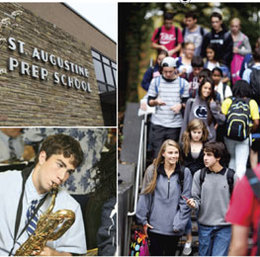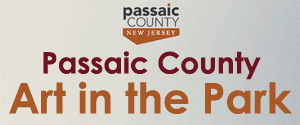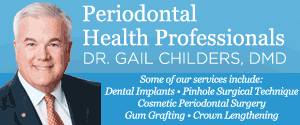
The 2013 Private High School Report Card
South Jersey is home to many amazing academic institutions, including several top-notch private high schools. These schools not only provide students with a quality education, but engage them in experiences that extend beyond the classroom and broaden their horizons. Once again, South Jersey Magazine has decided to examine how these private schools compare in numerous key areas. Unlike the public high schools, the data we requested is not a matter of public record; therefore we rely on the administrators and school officials to provide accurate information that can be used by students and parents alike. These areas include tuition cost, percentage of graduates attending four-year colleges, percentage of students receiving financial aid, student-to-teacher ratio, and number of both AP and honors classes offered. But perhaps the most important information we’ve gathered is the average SAT scores. In a matter of fairness, we asked the schools to provide their average SAT scores for 100 percent of the student body taking the test. If schools only provided a select percentile, rather than the average, we have omitted their scores. Read on and see how these schools are making the grade.
Baptist Regional
Enrollment 111
SAT Breakdown Math 609 Critical Reading 590 Essay 598
SAT Total Score 1797
Tuition $8,100
Financial Aid % 28%
% of 4-Year Colleges 76%
AP Classes 5
Honors Classes 16
Student-to-Teacher Ratio 9:1
Bishop Eustace
Enrollment 661
SAT Breakdown Math 577 Critical Reading 568 Essay 565
SAT Total Score 1710
Tuition $15,600
Financial Aid % 30%
% of 4-Year Colleges 98%
AP Classes 16
Honors Classes 17
Student-to-Teacher Ratio 12:1
Camden Catholic
Enrollment 700
SAT N/A
SAT Total Score N/A
Tuition $7,800
Financial Aid % 33%
% of 4-Year Colleges N/A
AP Classes 15
Honors Classes 25
Student-to-Teacher Ratio 15:1
Doane Academy
Enrollment 141
SAT Breakdown Math 540 Critical Reading 545 Essay 535
SAT Total Score 1620
Tuition $17,000
Financial Aid % 30%
% of 4-Year Colleges 100%
AP Classes 11
Honors Classes 22
Student-to-Teacher Ratio 8:1
Gloucester Catholic
Enrollment 640
SAT Breakdown Math 504 Critical Reading 507 Essay 516
SAT Total Score 1527
Tuition $8,125
Financial Aid % 30%
% of 4-Year Colleges 65%
AP Classes 8
Honors Classes 16
Student-to-Teacher Ratio 18:1
Holy Cross
Enrollment 570
SAT Breakdown Math 507 Critical Reading 497 Essay 498
SAT Total Score 1502
Tuition $9,775
Financial Aid % 28%
% of 4-Year Colleges 78%
AP Classes 8
Honors Classes 33
Student-to-Teacher Ratio 15:1
Moorestown Friends
Enrollment 303
SAT Breakdown Math 619 Critical Reading 627 Essay 631
SAT Total Score 1877
Tuition $25,700
Financial Aid % 28%
% of 4-Year Colleges 100%
AP Classes 16
Honors Classes N/A
Student-to-Teacher Ratio 9:1
Paul VI
Enrollment 1,120
SAT Breakdown Math 515 Critical Reading 509 Essay 510
SAT Total Score 1534
Tuition $8,090
Financial Aid % 25%
% of 4-Year Colleges 70%
AP Classes 16
Honors Classes 17
Student-to-Teacher Ratio 15:1
St. Augustine
Enrollment 677
SAT Breakdown Math 589 Critical Reading 557 Essay 565
SAT Total Score 1710
Tuition $15,600
Financial Aid % 37%
% of 4-Year Colleges 98%
AP Classes 15
Honors Classes 32
Student-to-Teacher Ratio 11:1
Private Discussion
Thinking of sending your child to private school? Here are the questions you should be asking.
Q: How can financial aid help those who see tuition as a major roadblock?
A: Financial aid gives parents the ability to obtain [a private school] education if they really want that for their children. However, many people think that financial aid is the full cost of education, [which is not the case].
– Mary Whipkey, interim president and director of admissions, Camden Catholic High School
Q: Why is it important for a school to be accredited?
A: Accredited schools, like Holy Cross, are engaged in continuous growth and improvement efforts through effective leadership, a comprehensive program of self-study, evaluation by peer educators external to the school, meeting the requirements for accreditation, exemplary programs, and supportive services.
– Nancy Gorman, Holy Cross High School
Q: Why are service projects an important part of the private high school experience?
A: Service projects are an essential part of the private high school experience because it gives a hands-on dimension of the underlying philosophy upon which the private school is built. The Pallotine Fathers and Brothers who established Bishop Eustace in 1954 have tried to instill the motto of “The charity of Christ urges us on” to our students. This founding principal is part and parcel of the educational approach.
– Nick Italiano, director of institutional advancement, Bishop Eustace Preparatory School
Q: How do you advise parents do their homework to see which private high school is right for their child?
A: What is the school’s “fit” with your desires for your child’s character? Catholic schools emphasize moral reflection and formation, academic rigor and life as part of a community. The Gloucester Catholic experience is best introduced through our Ram for a Day program. Prospective students “shadow” a current student and “feel” the spirit of our school.
– Kathy Coghlan, assistant director of development, Gloucester Catholic High School
Q: How does the curriculum diversity offered at a private high school help broaden a student’s horizons?
A: During high school, students solidify fundamental skills in critical thinking, computation, and written expression. However, the high school experience should also represent an opportunity for students to experiment with the application of these essential skills in authentic and varied contexts. The breadth of an independent school curriculum accommodates this need well. At Moorestown Friends School, we offer more than 60 different electives each year in topics ranging from epidemiology to neuroscience to hospice and health care to dance and much more.
– Chris Kimberly, assistant head of school and academic dean, Moorestown Friends School
Q: How big a role does technology play in today’s education?
A: Technology plays an integral part in education today, and for this reason, at Paul VI, each student has an iPad. This technology is thoroughly integrated into the classroom—books are on the iPads, students take notes and complete assignments, and even submit some of their work via cloud computing.
– Kathleen Stewart, director of admissions, Paul VI
Q: How does a smaller class size benefit students?
A: The foundation of all successful education is relationship based. Smaller class size allows us to get to know our students, their learning style and their passion and goals. In a smaller environment, students feel more confident in their relationships with teachers and peers to take risks and perform at a higher level.
– Jane Affleck, director of admissions, Doane Academy
Q: If thinking about private school, how important is it to start the application process early?
A: The process of choosing a private high school for your child should begin early in the year to give you ample time to accomplish three specific tasks: information gathering, on-site visits, and a shadow day.
Accomplish these tasks before the Christmas break so you are ready to complete the application paperwork in January. Both you and your child will feel confident knowing you have planned the next step in your child’s education.
– Lynn Conohan, head administrator, Baptist Regional School
Q: Would you recommend having a prospective student spend time with current students to get a true feel for campus life?
A: A prospective student and family must experience, not just visit [a school]. Our Hermit for a Day program is the best way for a prospective student to truly have the “Prep experience.” They will spend a day going to class and having lunch with a current freshman.
– Stephen Cappuccio, dean of enrollment management, St. Augustine Preparatory School
Fast Facts Informative tidbits about our area private high schools
BAPTIST REGIONAL
• Baptist Regional’s a cappella group, Vocal Forte, competes annually in New York City against the best singing schools from across the country.
• Baptist Regional celebrated its 40th anniversary last year.
• A partnership with Boston University and The University of Richmond provides Baptist Regional’s technology curriculum.
• Although the school is a ministry of Haddon Heights Baptist Church, students are from many denominations, representing more than 50 churches.
• Every spring, the students participate in a Walk/Serve-a-thon to raise money and give back to the area. Elementary students walk laps at a local park while the high school students do service projects for the community.
BISHOP EUSTACE
• The school works on a six letter day cycle; some of
the academic classes do not meet on every letter day.
• Bishop Eustace’s 32-acre campus is completely
wireless, allowing students to be plugged in wherever they are.
• Through BE Outreach, students go to Texas, New Orleans, and Navajo Nation in New Mexico over the summertime to perform a variety of projects for those in need.
• Bishop Eustace offers 30 varsity sports and more than 25 co-curricular activities to its students.
• All 209 graduates of the Class of 2012 went on to college, earning more than $37.2 million in scholarships and grants along the way.
CAMDEN CATHOLIC
• The school is the oldest Catholic high school in South Jersey, founded in 1887 by the Sisters of Mercy.
• Camden Catholic students collectively average more than 24,000 hours of community service a year through the school’s “Learning to Serve, Serving to Learn” program.
• The school has a lab for the graphic arts, a television broadcasting station, film production lab and a recording studio.
• All Camden Catholic students complete 80 hours of service learning through Campus Ministry in order to graduate.
• More than 20,000 students have graduated from the school since its founding.
DOANE ACADEMY
• Doane Academy was founded in 1837.
• The chapel and two of the main buildings at Doane Academy are on The National Register of Historic Places.
• In 2008, the school officially changed its name from St. Mary’s Hall–Doane Academy.
• The school offers an outdoor education program called “Rocks, Roots and Wings” that emphasizes character development.
• One hundred percent of students participate in extracurricular activities, including sports.
GLOUCESTER CATHOLIC
• Gloucester Catholic partnered with the Nancy Mulford School of Dance this year to form a dance team.
• Forty-seven percent of the faculty are graduates of Gloucester Catholic.
• Gloucester Catholic is the only school in the
Diocese of Camden offering a six-year comprehensive Catholic education.
• The school held its first commencement on
June 5, 1930.
• Prospective students have the ability to become a “Ram for the Day” so they can experience the school first hand.
HOLY CROSS
• Holy Cross High School opened its doors on
Sept. 4, 1957, with a freshman class of 333 students.
• Outside of the classroom, the school’s 78-acre campus’ facilities also include a game room, batting cages, a bookstore and a dance studio.
• The school is home to 26 athletic teams and offers 60 clubs and extracurricular activities.
• The lunch menu here could feature everything from General Tso’s wraps to veggie quesadillas.
• Every student attending Holy Cross receives a tablet PC to use in the learning
environment.
MOORESTOWN FRIENDS
• Moorestown Friends’ original high school was built in 1827 at the location
of the town’s current post office.
• Not only did Larry Van Meter become the Head of School in 2001, but he also attended Moorestown Friends from
pre-kindergarten through his senior
year in 1968.
• Moorestown Friends does not have
uniforms, but a dress code is enforced.
• The school’s most recent expansion, the debut of a new building on the Greenleaf property known as Hartman Hall, included the addition of eight math classrooms, a choral music suite, lockers, technology labs and lounge space for students.
• Nearly 90 percent of the student body live within a 12-mile radius of the school in Burlington and Camden counties.
PAUL VI
• Ninety-one percent of the student body participate in extracurricular activities.
• The school was the first in the area to achieve a 1:1 student-to-computer ratio more than a decade ago.
• With respect to athletics, the school has partnered with “Play Like a Champion Today,” the University of Notre Dame’s
initiative focused on promoting a positive sports culture for all young people and to promote character development through athletics.
• The school is responsible for 35 state championships and 155 conference championships.
• The school was designed by Haddon Heights’ Armond Nasuti and built by Pennsauken’s Cresco Builders back in 1965 for a cost of $2 million.
ST. AUGUSTINE
• The first graduating class was in 1963 and consisted of a mere 12 students.
• In addition to traditional sports like
basketball, football, soccer, track and tennis, St. Augustine also offers sports such as fencing, crew, bowling and rugby.
• Rising seniors are required to develop and carry out a service project consisting of approximately 100 hours.
• The school’s Unitas Program matches faculty members with eight to 10 freshmen and sophomores. The educators meet regularly with the students and monitor their academic progress, extracurricular involvement and overall social interaction.
• The site of the school was once home to railroad magnate Col. E.R. Woods, who was given the land for his services in the Civil War. The connection to Woods is why the road in front of the school is called Railroad Boulevard.
Published (and copyrighted) in South Jersey Magazine, Volume 10, Issue 7 (October, 2013).
For more info on South Jersey Magazine, click here.
To subscribe to South Jersey Magazine, click here.
To advertise in South Jersey Magazine, click here.












